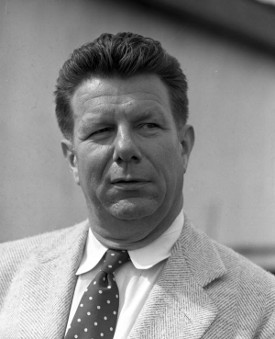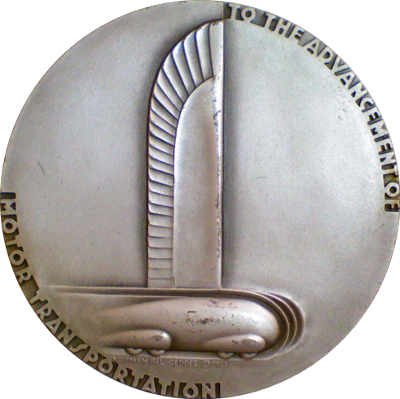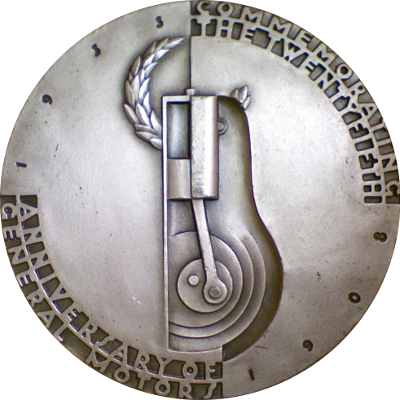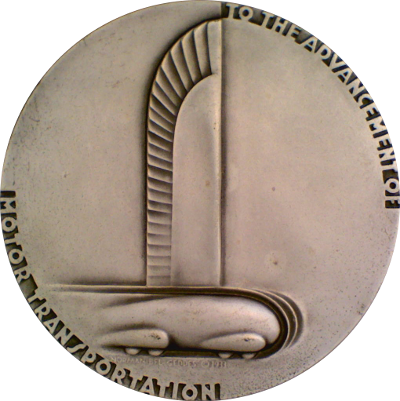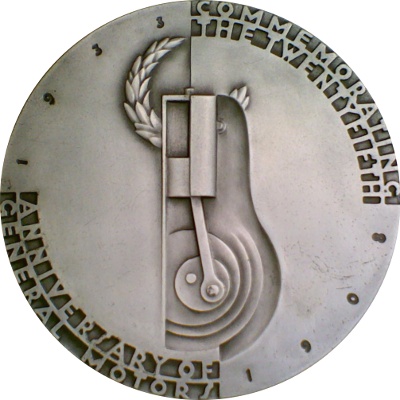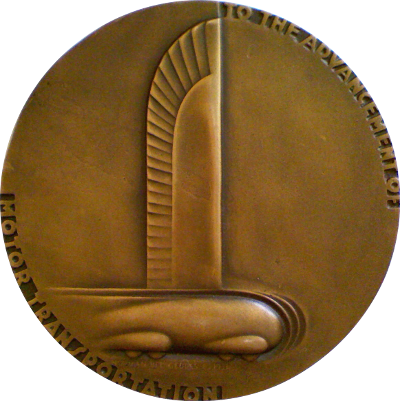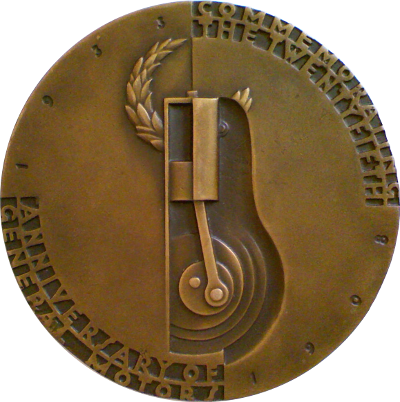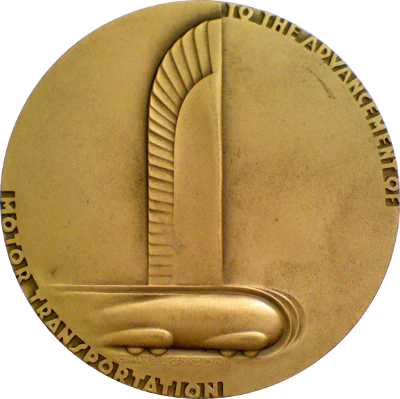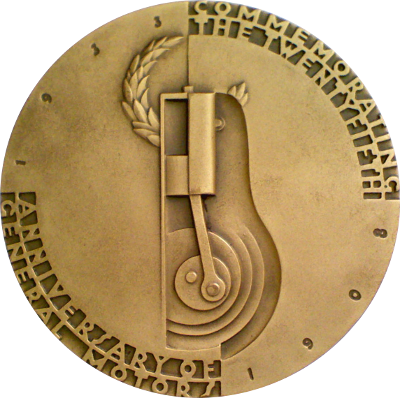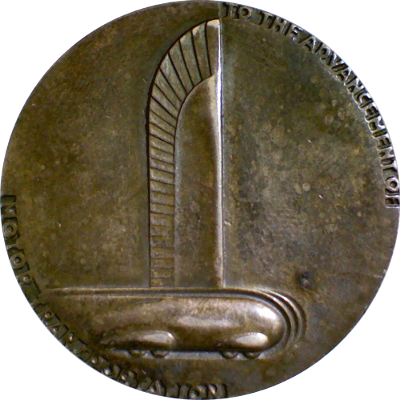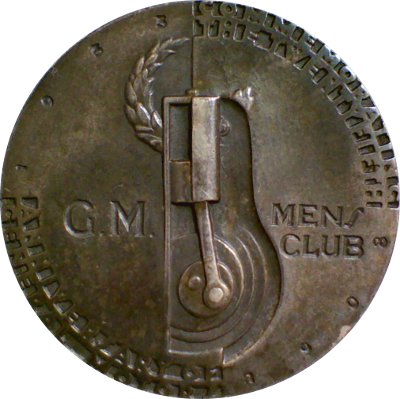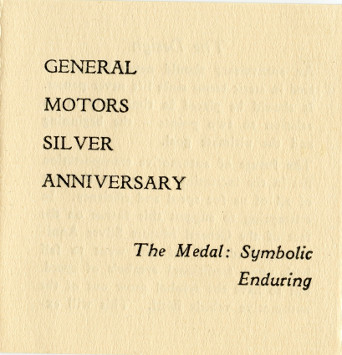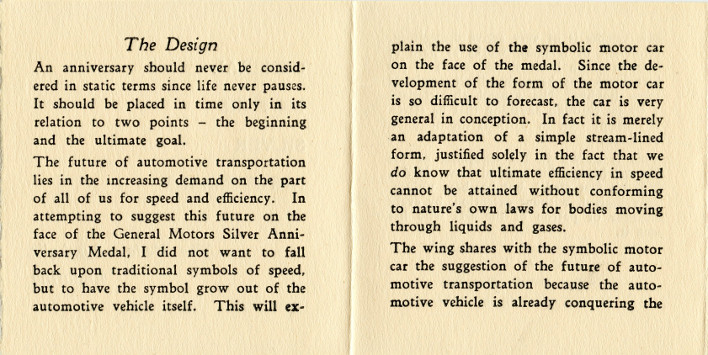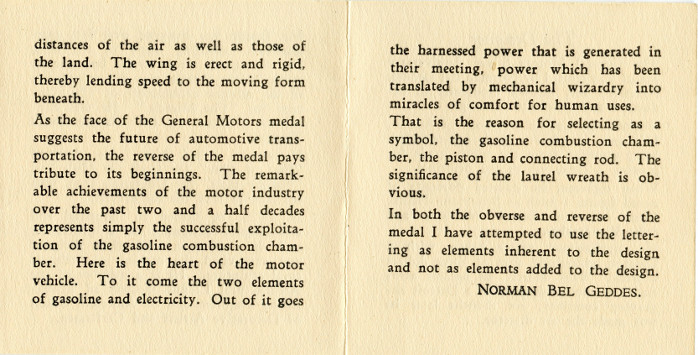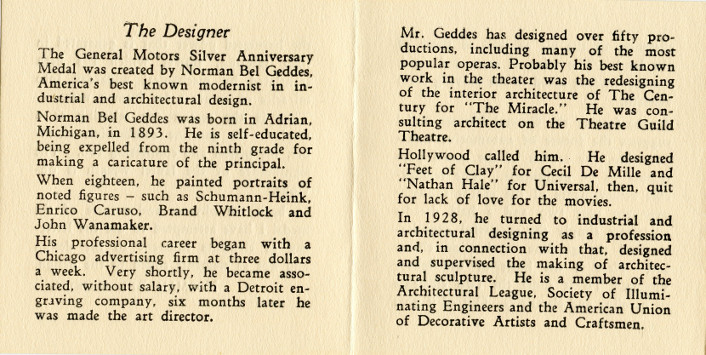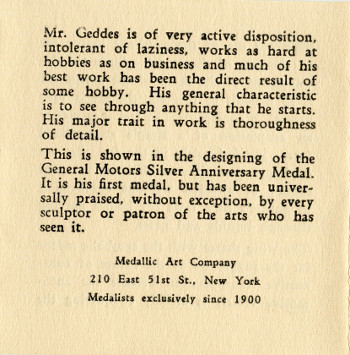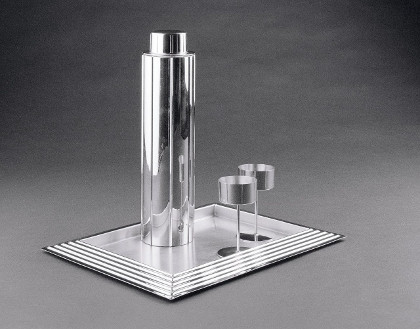Norman Bel Geddes was born Norman Melancton Geddes in Adrian, Michigan in 1893. His family was financially struggling and, while he had a talent for drawing and theater, he had no money and little patience for school. He finished just one year of high school and a few months at the Cleveland School of Art.
His career began with set design for Aline Barnsdall's Los Angeles Little Theater in the 1916-17 season. This is also the year he married Helen Bel Schneider and incorporated the "Belle" into his own name in the form of "Norman-Bel Geddes." After his divorce in 1932 he dropped the hyphen but retained the "Bel."
His set design career flourished first in Los Angeles, then on Broadway. He created hundreds of sets, not all of which were produced, and gained a reputation as the "Leonardo of our Theater."
By 1927 he was ready for a different kind of work and opened an industrial-design studio. He designed a wide range of commercial products, from cocktail shakers to commemorative medallions, to radio cabinets. His designs extended to unrealized futuristic concepts: a teardrop-shaped automobile, and an Art Deco House of Tomorrow. In 1929, he designed "Airliner Number 4," a 9-deck amphibian airliner that incorporated areas for deck-games, an orchestra, a gymnasium, a solarium, and two airplane hangars.
Geddes is probably best known for the work he did for General Motors in the 1930s. In 1933 he designed the iconic 25th Anniversary medal and in 1939 his Futurama exhibit in the GM pavilion at the New York World's Fair. Inside the Geddes-designed pavilion, 27,500 visitors a day rode in two-person car-capsules on a 16-minute tour of Geddes's streamlined vision for America circa 1960. Displayed in meticulously detailed and animated dioramas of cities and landscapes, Futurama offered up a country with a highly evolved traffic and superhighway system. Futurama was a tremendous success and led to national exposure for Geddes. President Franklin Roosevelt appointed Geddes to help plan an interstate highway system.
His popularity had already been the topic of a joke much earlier. In a New Yorker cartoon from 1932, a group of businessmes sit around a conference table. One of the men says:
"Gentlemen, I am convinced that our next new biscuit should be styled by Norman Bel Geddes."
By the early 1940s Geddes was ubiquitous and his ideas became larger and ever more elaborate and less feasible. Fortune magazine derided Geddes as "a bomb thrower" whose ideas "cost American businessmen billions of dollars." The lack of feasibility finally caused his influence to wane.
Over the course of his life, Geddes was married four times. After the divorce from Helen Belle Sneider he married Frances Resor Waite in 1933. After her death in 1943 he married Anne Howe Hilliard in 1944 but divorced her in 1951. He married his final wife, Edith Lutyens, in 1953.
Geddes died on May 8, 1958 in New York City. He was survived by his daughters, actress Barbara Bel Geddes and author Joan Bel Geddes Ulanov, both from his first marriage, as well as by his final wife. His autobiography "Miracle in the Evening" was published posthumously in 1960.
Sourced from Wikipedia and the sources listed in the Resources section.
